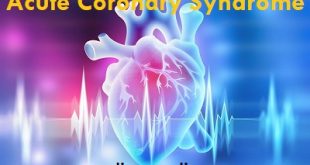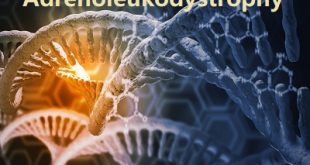Description
Acid lipase disease or deficiency occurs when the enzyme needed to break down certain fats that are normally digested by the body is lacking or missing, resulting in the toxic buildup of these fats in the body’s cells and tissues. These fatty substances, called lipids, include fatty acids, oils, and cholesterol. Two rare lipid storage diseases are caused by the deficiency of the enzyme lysosomal acid lipase, both of which are inherited and affect males and females
- Wolman’s disease (also known as acid lipase deficiency) is marked by the buildup of cholesteryl esters (normally a tranport form of cholesterol that brings nutrients into the cells and carries out waste) and triglycerides (a chemical form in which fats exist in the body). Infants with the disorder appear normal at birth but quickly develop progressive mental deterioration, low muscle tone, enlarged liver and grossly enlarged spleen, gastrointestinal problems, jaundice, anemia, vomiting, and calcium deposits in the adrenal glands, which causes them to harden.
- Cholesteryl ester storage disease (CESD) is an extremely rare disorder that results from storage of cholesteryl esters and triglycerides in cells in the blood and lymph and lymphoid tissue. Children develop an enlarged liver, leading to cirrhosis and chronic liver failure before adulthood. Children may also develop calcium deposits in the adrenal glands and jaundice. Onset varies, and the disorder may not be diagnosed until adulthood.
Causes of Acid Lipase Disease or Lysosomal Acid Lipase Deficiency
Acid Lipase Disease or Lysosomal Acid Lipase Deficiency is caused due to mutations in the LIPA gene. This gene contains specific instructions for producing lysosomal acid lipase enzyme. Due to mutations, the gene loses that genetic instruction and the digestive system does not get the enzyme to digest fat present in a food. Thus, the disease occurs.
Risk Factors
Amount of Residual LAL Activity
The severity of LAL-D appears to be directly proportional to the magnitude of tissue build-up of cholesteryl esters and triglycerides. This seems to be directly correlated with the amount of residual LAL activity that remains functional, which is determined by the nature of the underlying mutation variant.
Age and Gender
LAL-D can be manifested in patients of all ages, from infancy to adulthood, though disease severity seems to be inversely proportional to the age of onset.1 Gender does not seem to be a risk factor in LAL-D as males and females are affected in about equal numbers.
Genetics
Several kinds of different loss-of-function mutation variants in the LIPA gene have been identified.7,8 The most common inherited defect in the LIPA gene is a splice site mutation in exon 8 (E8SJM; c.894G>A).
Diet and Lifestyle
Due to the abnormally high lipid profile of LAL-D patients, the implementation of a diet low in cholesterol and triglycerides is advised to reduce the risk of atherosclerotic disease.
Symptoms of Acid Lipase Disease or Lysosomal Acid Lipase Deficiency
To understand the symptoms of Acid Lipase Disease or Lysosomal Acid Lipase Deficiency, it is necessary to understand the symptoms of Wolman’s disease and Cholesteryl ester Storage Disease.
- Symptoms of Wolman’s Disease: The symptoms in this form of Acid Lipase Disease or Lysosomal Acid Lipase Deficiency are visible within a few days or weeks of birth. Affected infants may have the following symptoms:
- Bloating or swelling of the stomach.
- Significant enlargement of liver and spleen.
- Fibrosis of liver.
- Accumulation of fluid in the abdominal cavity.
- Persistent vomiting.
- Frequent diarrhea and fatty stools.
- Hardening of adrenal gland.
- Lack of coordination of muscles.
If not treated in time, the symptoms worsen further leading to liver dysfunction, lower levels of RBCs in the blood, and several other life threatening issues.
- Symptoms of Cholesteryl Ester Storage Disease: The symptoms of cholesteryl ester storage disease vary widely. Some patients develop symptoms of CESD in early childhood, and others may have few undetectable symptoms in childhood. The later cases remain undiagnosed till adulthood. Following are the major symptoms of CESD:
- Abnormal fat deposits in many organs.
- Fatty lever.
- Abnormal blood lipoprotein profile.
- Hepatomegaly leading to fibrosis of liver.
- Hardening of adrenal gland.
In Acid Lipase Disease or Lysosomal Acid Lipase Deficiency, the liver function gets severely damaged if not diagnosed or treated in time.
What are the complications of acid lipase disease or LAL-D?
LAL-D can affect many systems throughout the body. Potential complications of LAL-D include damage to the:
- Liver: Enlarged liver, fibrosis, cirrhosis, liver failure
- Cardiovascular System: Low amounts of good cholesterol, high amounts of bad cholesterol, heart attack and stroke
- Spleen: Enlarged spleen, low platelet count leading to bleeding problems
- Gastrointestinal System: Pain, bleeding, diarrhea, poor absorption of nutrients leading to malnutrition and poor growth
Diagnosis of acid lipase disease
- Prenatal screening tests if suspected
- Liver biopsy
Before birth, cholesteryl ester storage disease and Wolman disease can be diagnosed in the fetus by chorionic villus sampling.
After birth, doctors measure levels of lysosomal acid lipase in a biopsy sample of the liver or other tissues (removal of a tissue specimen for examination).
Genetic testing, which is used to determine whether a couple is at increased risk of having a baby with a hereditary genetic disorder, is also available.
Treatment for acid lipase disease
There are currently no specific disease treatments for LAL-D, but promising strategies are emerging. Until recently, existing approaches were primarily symptomatic and focused on supportive therapies to reduce the burden of disease complications.
Possible treatment strategies are based on dietary manipulation, lipid-lowering drugs, hematopoietic stem cell transplantation (HSCT), liver transplantation and enzyme replacement therapy (ERT). Some of these approaches may be used in combination. In patients with advanced disease, additional procedures can be performed to limit morbidity, such as splenectomy and ligation of esophageal varices.
Enzyme Replacement Therapy (ERT)
ERT envisages the reinstatement of enzymatic LAL activity in order to prevent the accumulation of cholesteryl esters and triglycerides and ultimately restore normal organ function.
Lipid-Lowering Drugs
Prior to the availability of ERT, lipid-lowering drugs were frequently prescribed to LAL-D patients, particularly those with milder CESD phenotypes.
Statins (HMG-CoA-reductase inhibitors) are low-density lipoprotein (LDL) cholesterol-lowering agents, which have been used either as monotherapy or in combination with other lipid-lowering drugs and found to reduce the lipid load and liver size in LAL-D patients.
Hematopoietic stem cell transplant (HSCT)
HSCT has been performed in a few infants with LAL-D. While information regarding long-term outcomes is limited, HSCT has been associated with serious complications.
Liver transplant
A liver transplant may provide patients with LAL-D relief from liver failure, but it does not address the underlying cause of the disease and may not halt disease progression in the heart and kidneys. It will also not prevent the risk of other severe complications.
Prevention of acid lipase disease
Prevention methods of inheriting lysosomal acid lipase deficiency would genetic counseling of the parents who are likely to be carriers of the mutated gene before having offspring.
 Diseases Treatments Dictionary This is complete solution to read all diseases treatments Which covers Prevention, Causes, Symptoms, Medical Terms, Drugs, Prescription, Natural Remedies with cures and Treatments. Most of the common diseases were listed in names, split with categories.
Diseases Treatments Dictionary This is complete solution to read all diseases treatments Which covers Prevention, Causes, Symptoms, Medical Terms, Drugs, Prescription, Natural Remedies with cures and Treatments. Most of the common diseases were listed in names, split with categories.







